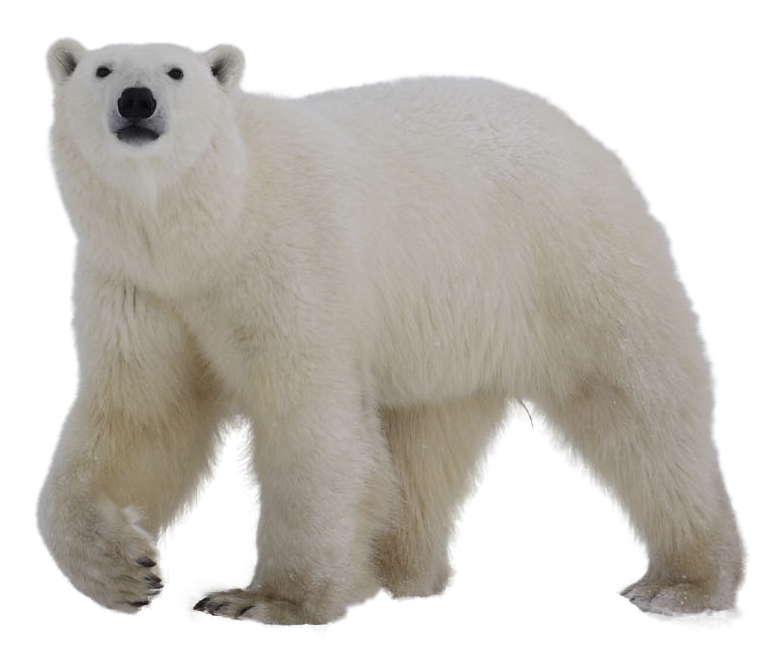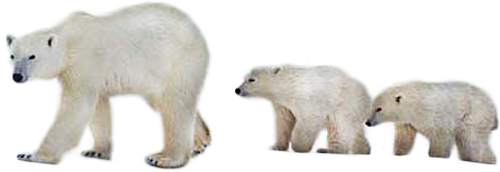Despite the white fluffy appearance of polar bears fur which is transparent it actually has black skin

Despite the white, fluffy appearance of Polar Bears fur (which is transparent), it actually has black skin.

Polar bears are known for their majestic beauty and iconic white fur that helps them blend into their snowy habitat. However, contrary to popular belief, under that white fluff, polar bears actually have black skin. This intriguing fact might surprise many, but it is essential for their survival in the harsh Arctic environment.
The black skin of polar bears serves multiple purposes. Firstly, it helps them absorb and retain heat more effectively. Living in the Arctic means enduring freezing temperatures, and having black skin allows polar bears to soak in as much heat from the sunlight as possible. This efficient heat absorption helps them stay warm in their icy habitat, preserving their body temperature and keeping them active in the extreme cold.

Additionally, the black skin of polar bears plays a significant role in camouflage. Despite their white fur, when viewed from underwater or a distance, their black skin creates a seamless transition with the dark ocean or landscape behind them. This camouflage helps them sneak up on prey more effectively and remain concealed from potential threats. It’s a fantastic evolutionary adaptation that aids in their hunting success and survival.
Another fascinating aspect of their skin is that it is actually transparent. While their fur appears white, it is just hollow and translucent. The hair acts as a remarkable insulator, trapping air to provide additional insulation against the frigid Arctic temperatures. This combination of translucent fur and black skin creates the perfect blend of camouflage, insulation, and heat absorption for polar bears.
Understanding the intricacies of polar bear adaptations is vital for their conservation efforts. As climate change continues to affect the Arctic regions, their environment is rapidly changing, posing new challenges for these incredible creatures. By gaining deeper knowledge about their unique characteristics and adaptations, researchers and conservationists can work towards creating effective strategies to protect these remarkable animals.
In conclusion, the black skin of polar bears, concealed beneath their white fur, serves various essential purposes. It helps them absorb and retain heat, camouflages them in their Arctic surroundings, and works in harmony with their translucent fur for insulation. These fascinating adaptations contribute to their survival in one of the harshest environments on Earth. By appreciating and learning about these incredible features, we can ensure the conservation and protection of these magnificent creatures for generations to come.
Source: pngimg.com
Tags
Share
Related Posts
Quick Links
Legal Stuff

